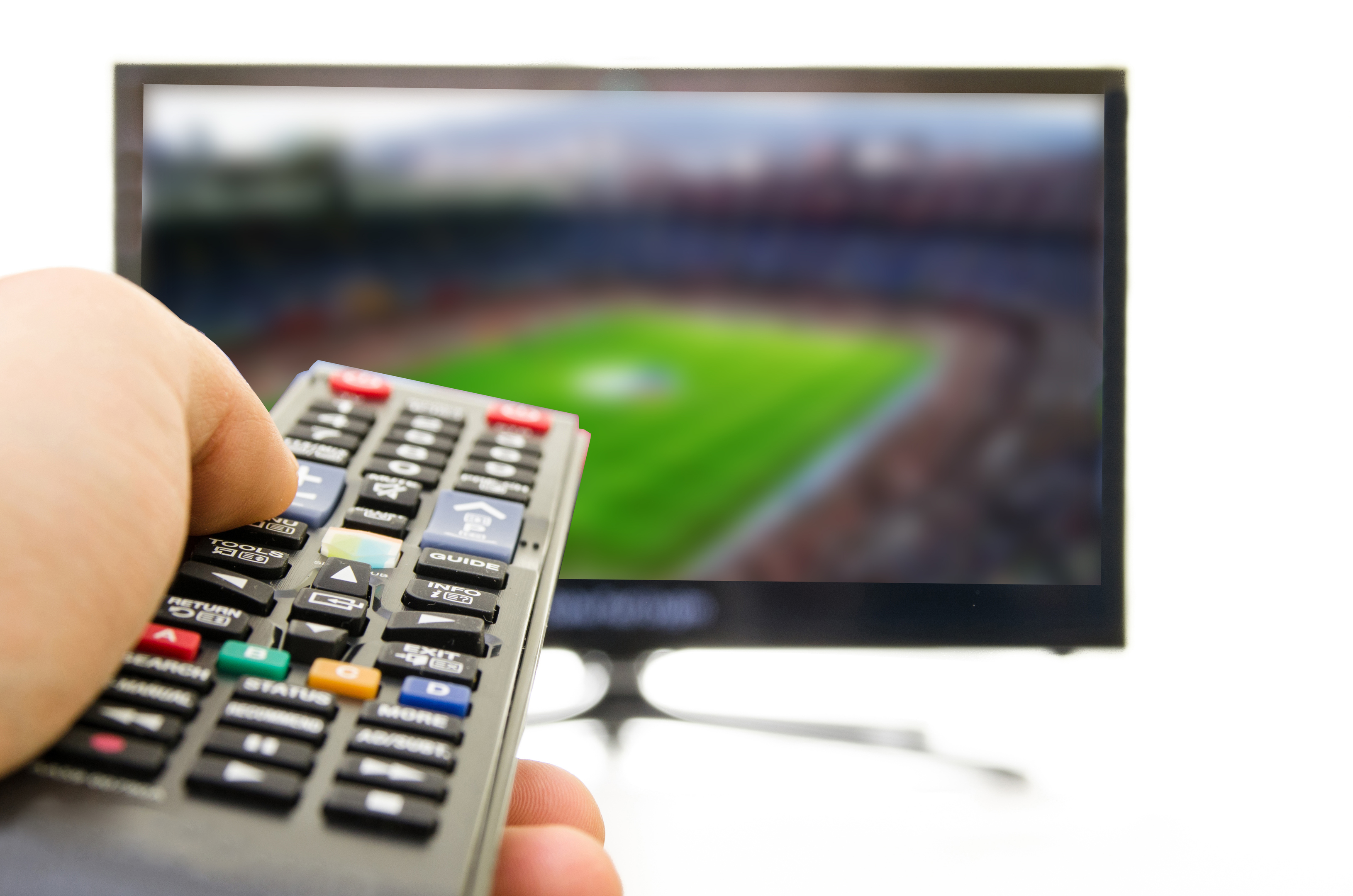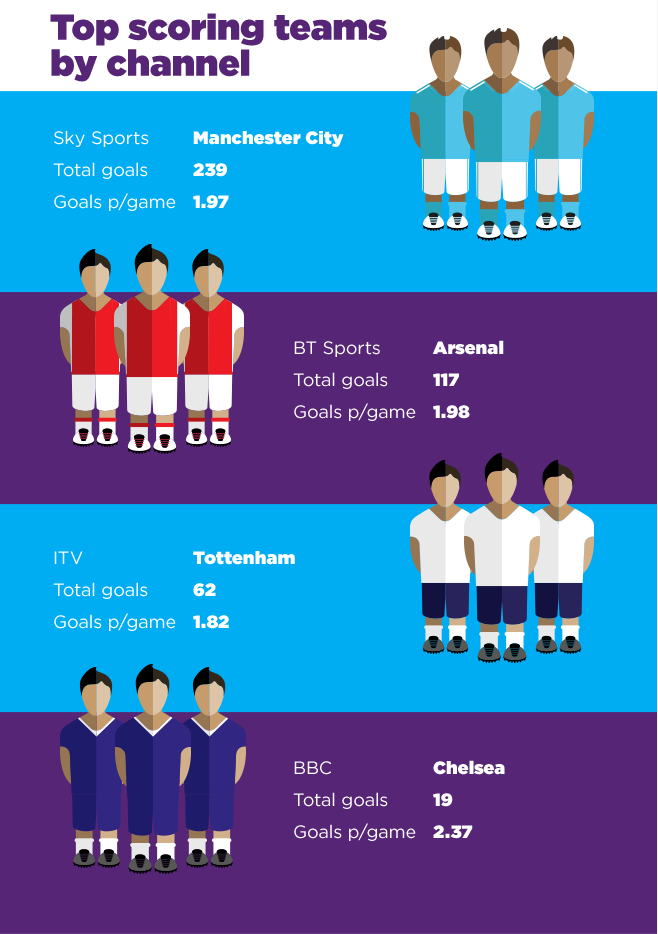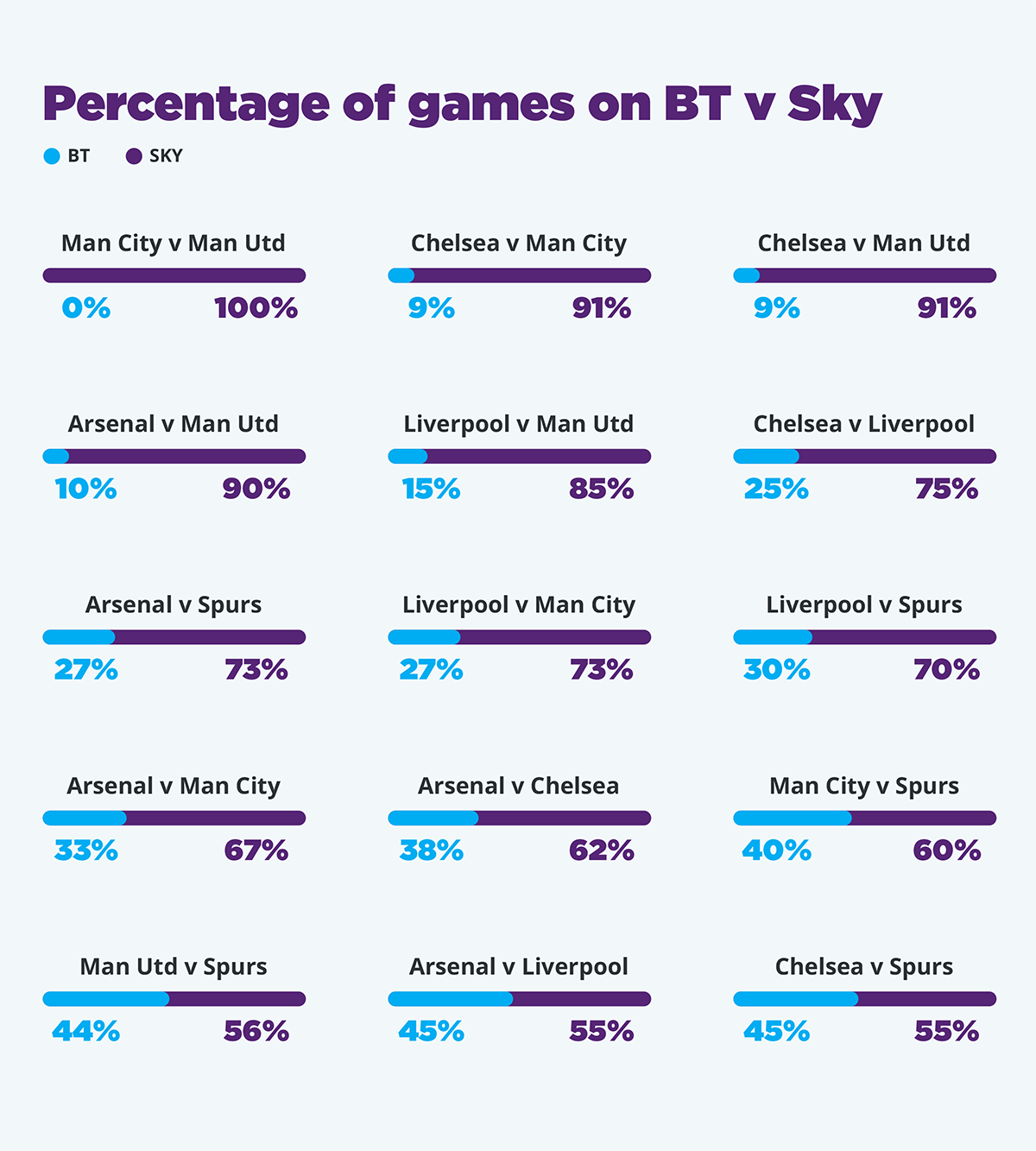
IF you’re a fan of the Premier League, you’re usually spoiled for choice when it comes to the weekend TV coverage.
Several games are shown live across Sky Sports and BT Sport, but there’s one team that appears more than most.
According to new findings by MoneySuperMarket, Manchester United had an unrivalled 54 matches televised last season, the most any Premier League side in a single campaign had over the past five seasons.
It’s also more than six other Premier League clubs have had each over the past five years (Bournemouth had 34 games televised in that time, Brighton 52 games, Burnley 46 games, Huddersfield 25 games, Stoke 49 games and West Brom 51 games).
In contrast, the number of Chelsea games on TV has decreased each season, down from 44 in 2012/2013 to 33 in 2016/2017 – a 25% decrease, despite them having won the Premier League title twice in the last three seasons.
These findings come as part of research which examined when and where fans can watch their team on TV, with a new guide helping supporters to choose the right package for them.
The start of the football season historically sees an above average number of customers taking out sports TV packages, but 2017 has seen an explosion – with a 1,000% increase in people taking out new packages.
The two most screened fixtures are Chelsea vs Manchester United and Chelsea vs Manchester City. The both aired 14 times a piece over the past five years, closely and a bit surprisingly followed by West Ham vs Manchester City (13 times).
If you’re after goals, Manchester City are a good bet, – the Citizens have scored the most goals out of anyone, netting 386 goals across 195 games. This is an average of just under two goals a game, the highest rate of any Premier League side.
Thrill-seekers should avoid games featuring Stoke City though – the Potters average less than a goal per televised game (0.94) and they are the only Premier League team to do so.

Even with BT’s exclusive European football coverage, Arsenal, Chelsea, Manchester United, Manchester City, Liverpool and Tottenham Hotspur are still being shown more often on Sky and this is reflected in the number of live fixtures between the so-called ‘Big Six’.
The Manchester derby has been a Sky exclusive with BT yet to televise a single game between North-West giants and it is a similar story with Manchester United vs Liverpool as Sky have aired 11 out of the last 13 fixtures between the sides.


Enjoy the convenience of having The Sunday Post delivered as a digital ePaper straight to your smartphone, tablet or computer.
Subscribe for only £5.49 a month and enjoy all the benefits of the printed paper as a digital replica.
Subscribe